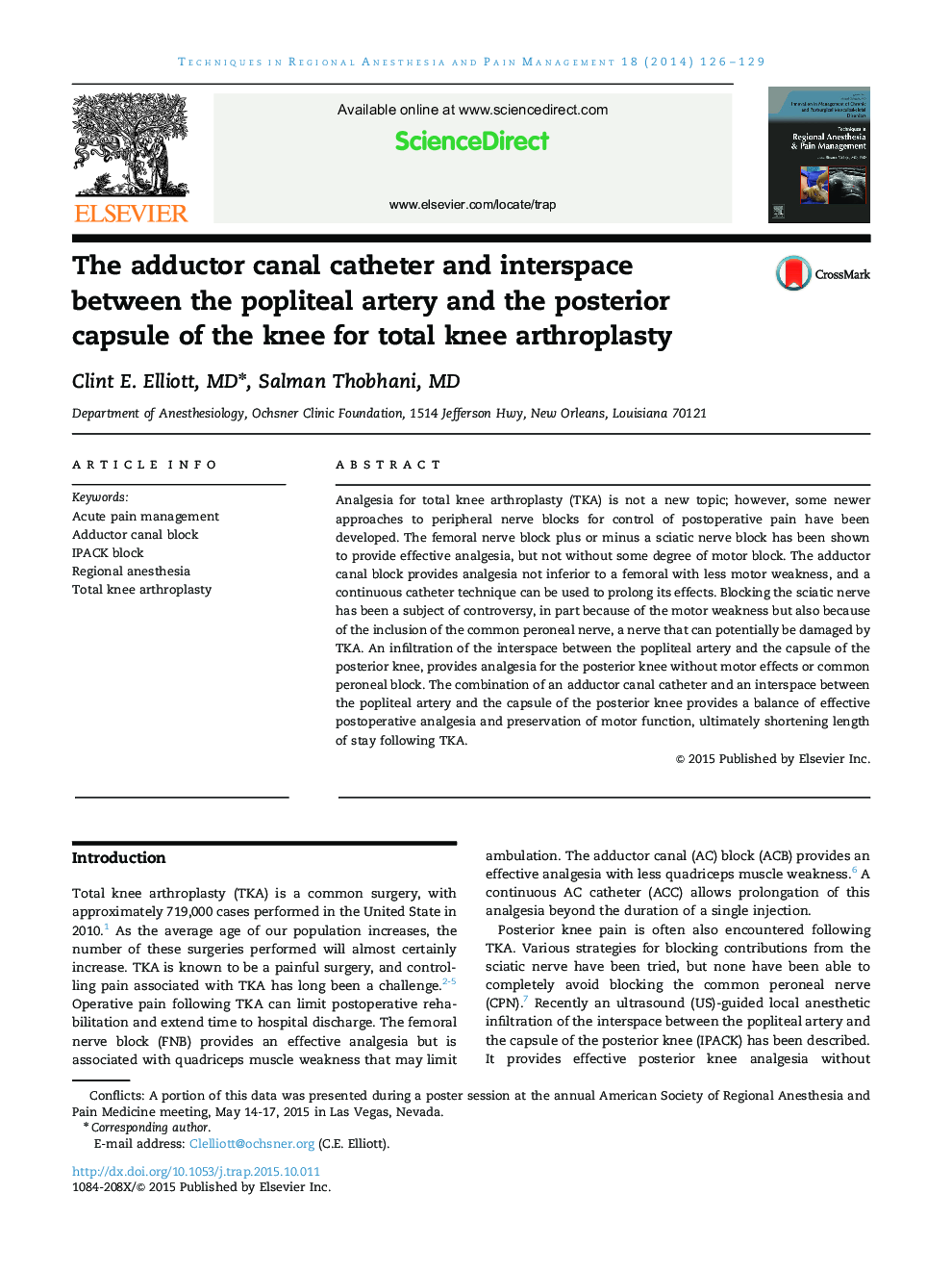| Article ID | Journal | Published Year | Pages | File Type |
|---|---|---|---|---|
| 2772094 | Techniques in Regional Anesthesia and Pain Management | 2014 | 4 Pages |
Analgesia for total knee arthroplasty (TKA) is not a new topic; however, some newer approaches to peripheral nerve blocks for control of postoperative pain have been developed. The femoral nerve block plus or minus a sciatic nerve block has been shown to provide effective analgesia, but not without some degree of motor block. The adductor canal block provides analgesia not inferior to a femoral with less motor weakness, and a continuous catheter technique can be used to prolong its effects. Blocking the sciatic nerve has been a subject of controversy, in part because of the motor weakness but also because of the inclusion of the common peroneal nerve, a nerve that can potentially be damaged by TKA. An infiltration of the interspace between the popliteal artery and the capsule of the posterior knee, provides analgesia for the posterior knee without motor effects or common peroneal block. The combination of an adductor canal catheter and an interspace between the popliteal artery and the capsule of the posterior knee provides a balance of effective postoperative analgesia and preservation of motor function, ultimately shortening length of stay following TKA.
